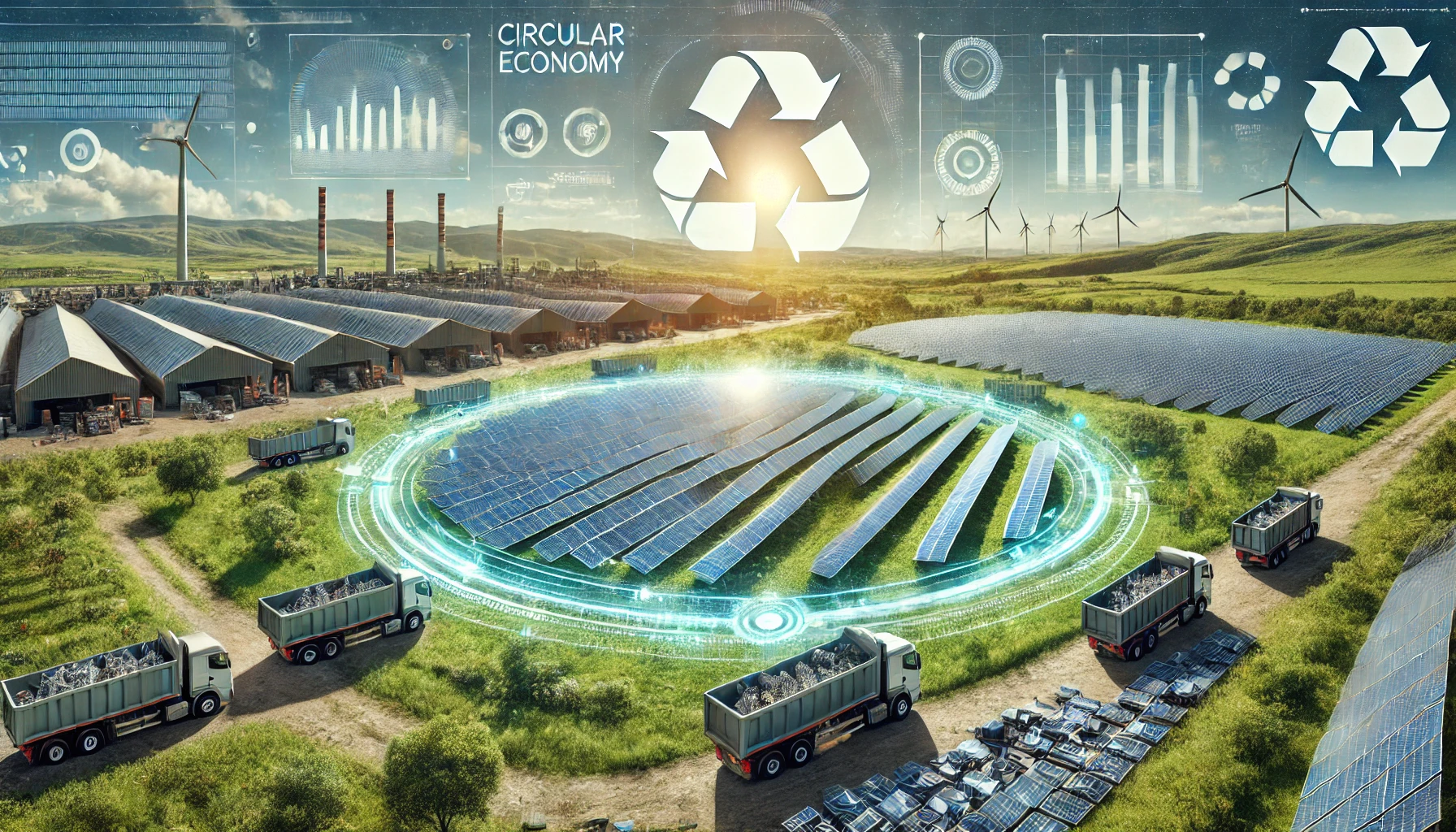Toward a Greener Future: Enhancing Solar Panel Efficiency and Circular Economy Practices
The study explores how extending the lifespan of solar panels and improving recycling processes can reduce environmental impacts, particularly in waste generation and resource consumption. It emphasizes the need for balanced policy interventions to achieve a sustainable circular economy for solar panels.

A study conducted by researchers from the Department of Technology Management for Innovation at The University of Tokyo and the Material Cycles Division at the National Institute for Environmental Studies explores the challenges and potential solutions for achieving a circular economy for solar photovoltaic (PV) panels. As the global adoption of solar panels increases to meet decarbonization and energy stabilization goals, concerns about resource constraints and environmental impacts are becoming more pressing. According to projections by the International Energy Agency (IEA), by 2040, the demand for key materials like copper, essential for solar panel production, could quadruple. This surge in demand raises fears of supply chain disruptions, higher prices, and environmental degradation, which could impede the smooth expansion of renewable energy infrastructure. The researchers aimed to tackle these concerns by analyzing various factors both socioeconomic and physical that influence the lifecycle of solar panels, using Japan’s largest administrative region as a case study.
Developing a Simulator to Assess Key Variables
The study’s core contribution lies in the development of a resource circulation simulator designed to assess the interactions between business environments, physical factors, and policy interventions. By conducting 30,000 Monte Carlo simulations on 26 different input variables, such as panel degradation rates, economic viability, and recycling incentives, the researchers were able to identify the key variables that influence environmental outcomes. This process, known as global sensitivity analysis, allowed them to examine how various factors interact and affect environmental indicators like greenhouse gas (GHG) emissions, resource consumption potential (RCP), and final disposal (FD). One of the study's most important findings is that the variables that minimize resource consumption and waste generation are different from those that reduce GHG emissions, highlighting the trade-offs involved in optimizing the solar panel lifecycle.
Extending Panel Lifetime Reduces Waste
For instance, the analysis showed that extending the average lifetime of solar panels plays a crucial role in reducing both FD and RCP. By ensuring that panels last longer, fewer new panels need to be produced, which reduces the demand for raw materials and minimizes the environmental burden associated with manufacturing and disposal. This strategy could reduce final disposal by up to 0.7% and resource consumption by up to 12.6%, with only a marginal negative impact on GHG emissions. However, when the optimization focus shifts to reducing GHG emissions, the results are less favorable for resource consumption and waste. In this case, while GHG emissions may decrease slightly, FD and RCP increase significantly. This is because prioritizing GHG reductions often involves increasing the production of new, more efficient panels, which in turn increases resource extraction and waste generation.
Importance of Panel Efficiency and Recycling
The study also emphasized the importance of maintaining or improving the efficiency of solar panels throughout their lifecycle. By increasing the efficiency of energy generation, the environmental benefits from solar energy are maximized, and the need for new panels can be delayed. This, in turn, reduces the overall demand for resources and lowers the environmental burden. However, the researchers caution that improving efficiency alone is not enough. Policy interventions are needed to ensure that panels are reused and recycled effectively. The researchers suggest that policies promoting advanced sorting and processing technologies for recycling solar panels could help mitigate the environmental impacts of solar energy deployment. These technologies, which separate valuable materials like glass and aluminum from end-of-life panels, could significantly reduce FD and RCP. Moreover, financial incentives for recycling and reuse could encourage the adoption of these advanced technologies, making the circular economy for solar panels more achievable.
The Role of Policy Interventions in Sustainability
The study found that policy interventions play a significant role in determining environmental outcomes. For example, providing warranties for second-hand equipment could increase the reuse of solar panels, reducing the demand for new products and minimizing waste. Additionally, financial incentives for reducing GHG emissions through recycling and reuse could further improve environmental outcomes. However, the researchers note that the design of these policies needs to consider the trade-offs between different environmental goals. Policies that focus solely on reducing GHG emissions may inadvertently increase resource consumption and waste generation, while policies aimed at minimizing waste could have only a limited impact on GHG reductions.
A Balanced Approach for a Circular Economy
The researchers argue that a balanced approach is needed to achieve a circular economy for solar panels. Extending the lifetime of solar panels and improving recycling processes are key strategies for reducing resource consumption and waste. However, these efforts must be complemented by policies that promote efficiency and incentivize recycling. The study’s findings offer valuable insights for policymakers and industry leaders seeking to make solar energy more sustainable. By considering the complex interactions between various socioeconomic and physical factors, decision-makers can design strategies that minimize environmental impacts without sacrificing the benefits of renewable energy. This research provides a robust framework for guiding both public and private sectors toward a more sustainable future in solar energy deployment.
- FIRST PUBLISHED IN:
- Devdiscourse










